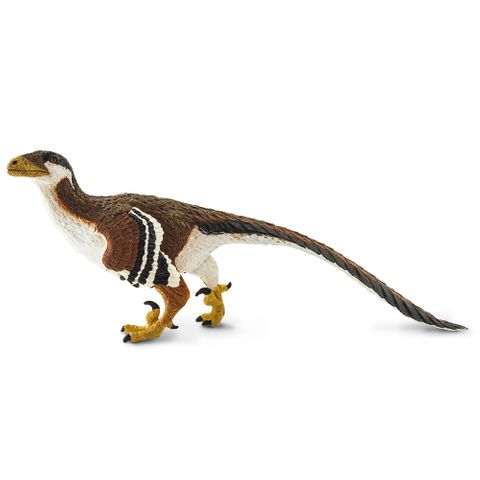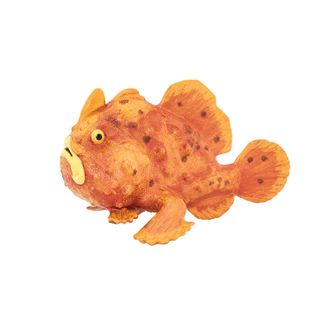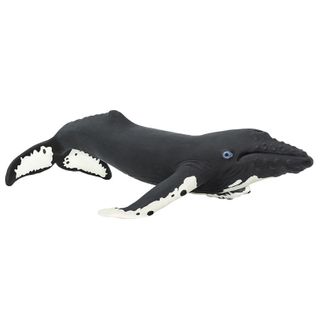
Description
Deinonychus was a larger relative of Velociraptor. Like its smaller cousin, it had an extra large claw on each foot that helped it subdue its prey. It was also very likely covered in feathers, since this was a common feature found in other members of its family.
- Scientific Name: Deinonychus (“Terrible Claw”)
- Characteristics: This Deinonychus figure is covered in feathers, as fossil evidence of other Dromaeosaurid dinosaurs shows. This Deinonychus is at rest, having a look around, with its wings folded neatly by its side and the large, sickle-shaped claws on each foot on full display.
- Size and Color: Our Deinonychus figure is 8 ¾ inches long and 3 ½ inches tall from its toes to its nose. It’s about the size of a pair of scissors. This Deinonychus features dark brown, reddish brown, black and white plumage (feathers), with red eyes, sandy yellow skin on the feet and nose, and black claws.
- The Deinonychus is part of the Wild Safari® Prehistoric World collection
- All of our products are Non-toxic and BPA free
History:
The first remains of Deinonychus were found in 1931 by Barnum Brown, but he was never able to fully examine and prepare the remains he found next to a large plant-eating dinosaur named Tenontosaurus. In 1969, John Ostrom returned to the site and was able to uncover remains of several specimens he would name “Deinonychus”.
Deinonychus remains have been found in Montana and Wyoming, in areas that would have been swamps or floodplains in the Early Cretaceous Period, about 110 million years ago. It was believed to have hunted larger animals, possibly in packs. There is some debate about whether its large foot claws were used for slashing prey or for helping to pin it down so it could deliver a killing bite.
The discovery of Deinonychus helped to revolutionize how many viewed dinosaurs. Previously believed to be mostly large, slow and lumbering reptiles, Deinonychus showed that they could also be small, agile and quick hunters. It helped promote the idea that dinosaurs were likely warm-blooded, rather than cold-blooded like today’s reptiles.
- Size in cm: 22.23 L x 4.45 W x 8.74 H
- Size in inches: 8.75 L x 1.75 W x 3.44 H
- UPC: 095866004156










